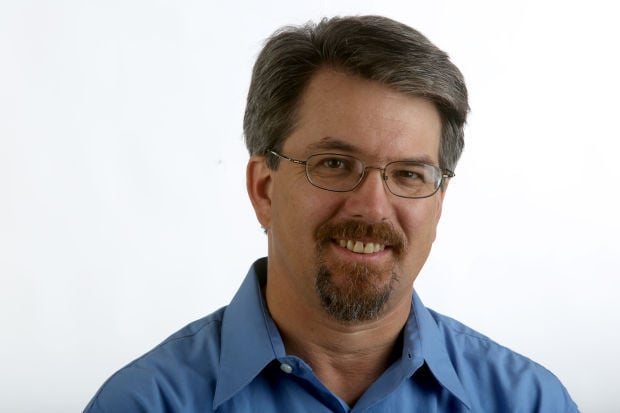Remember the ad wars of the 2014 election season, when there seemed to be back-to-back campaign spots at every break on every TV channel?
Well, you will not be seeing that in this year’s Pima County bond election campaign.
It’s shaping up to be a low-key affair involving one well-funded, well-connected faction and another that is small and poor but seems to feel it has truth on its side. At issue are seven separate bond issues on the November ballot totaling around $816 million in spending.
The wealthy campaign, of course, is Yes on Pima County Bonds, which so far has reported donations of more than $120,000, two-thirds of that in donations of $10,000 or more.
The big donors include some predictable local institutions that tend to weigh in for these campaigns. Southwest Gas, for example, donated $15,000 on Aug. 18. Cox Communications donated $8,000 on June 30. Tuttle-Click Automotive Group also jumped in recently, donating a whopping $25,000 on Aug. 17.
Other big donors would benefit either directly or indirectly from projects included in the seven Pima County Bond questions that we will be voting on starting next month.
Campus Research Corp., the company created by the Arizona Board of Regents that leases out space at the UA Tech Parks, donated $10,000 on July 16. The tech parks would be among the biggest and most immediate beneficiaries if the bond issues pass.
One project is $10 million to improve Science Park Drive, which runs through the southeast-side Tech Park at South Rita Road and Interstate 10.
Another $20 million would go to help build a 180,000-square-foot laboratory and office building at The Bridges, the new Tech Park campus on Tucson’s south side, near Interstate 10 and South Kino Parkway.
Finally, there’s the $30 million for the Sonoran Corridor, a new highway that would connect Interstate 19 and Interstate 10, in part to ease travel to and from the Tech Park. That’s a total of $60 million in spending that would benefit the UA Tech Parks.
Diamond Ventures donated $25,000 toward the Yes campaign on July 9. The company owns land near the Sonoran Corridor that would benefit from its construction and also could benefit from the $95 million proposed for the purchase of land for open space.
The Sundt Cos. donated $5,000 toward the Yes campaign on June 22. The $800 million in bond packages includes numerous construction contracts Sundt could — and usually does — win.
Banner Health donated $15,000 to the Yes campaign on Aug. 4. It would benefit from $18 million of bond spending on Banner UMC South (the former Kino Hospital), $12 million of that on upgrading the hospital’s intensive care unit.
The Western National Parks Association donated $2,000 on June 15. The association, now based in Oro Valley, would become a tenant in the new, $18 million Southern Arizona Regional Orientation Center proposed for the empty area west of the Santa Cruz River, adjacent to downtown.
Executive Director Jim Cook explained to me Thursday that the association operates stores in 67 Western national parks and monuments and uses the proceeds to fund educational programs for the parks.
“The reason we’re so interested is we want to promote the national parks. That’s consistent with the agenda of the regional orientation center,” he said.
One of the more interesting characters on the Yes side is Matt Smith of Strategic Issues Management Group. Smith is a member of the bond advisory committee that came up with the list of proposed projects, and the Yes campaign paid his company $7,635 for campaign consulting in July.
Smith and SIMG are also communications consultants for Tucson Medical Center, which donated $15,000 to the Yes campaign on July 14, though TMC says its donation was to help bring about the community benefits the bond projects would bring.
The Taxpayers Against Pima Bonds campaign, in contrast, is a low-dollar affair. Treasurer Ralph Kayser told me he expects the campaign will raise more than $10,000. So far it hasn’t, meaning it doesn’t need to file campaign finance reports yet.
A couple of the primary campaigners against the bond issues are members of the 25-person bond advisory committee. Joe Boogaart, an appointee of Supervisor Ally Miller, is helping lead the No campaign.
“I just felt it was too much money and there were a lot of projects in there that benefited special interests groups, not the community as a whole,” he said Thursday.
Committee member Gary Davidson is also arguing publicly against the bond issues, despite having worked hard on the committee for nine years. Davidson, who is not affiliated with any of the campaigns, told me Thursday he felt the spending on parks and recreation focused too much on facilities at the Kino Sports Complex and too little on the neighborhood parks where most people live.
“We left vast swaths of the community not benefiting from the bond program,” Davidson said.
Countering claims from the No campaign has been one of the key activities for Larry Hecker, chairman of the Yes campaign and the bond advisory committee. For example, he said, Pima County residents are not the highest taxed in the state, though they may have the highest property taxes.
“When you look at the total tax burden — property tax, sales tax and other taxes — we’re not the most heavily taxed. We fall in the lower half of the counties,” he said.
The campaign will be sending out fliers, putting up signs and going door-to-door, he said. But you probably won’t be seeing any TV ads at all.





